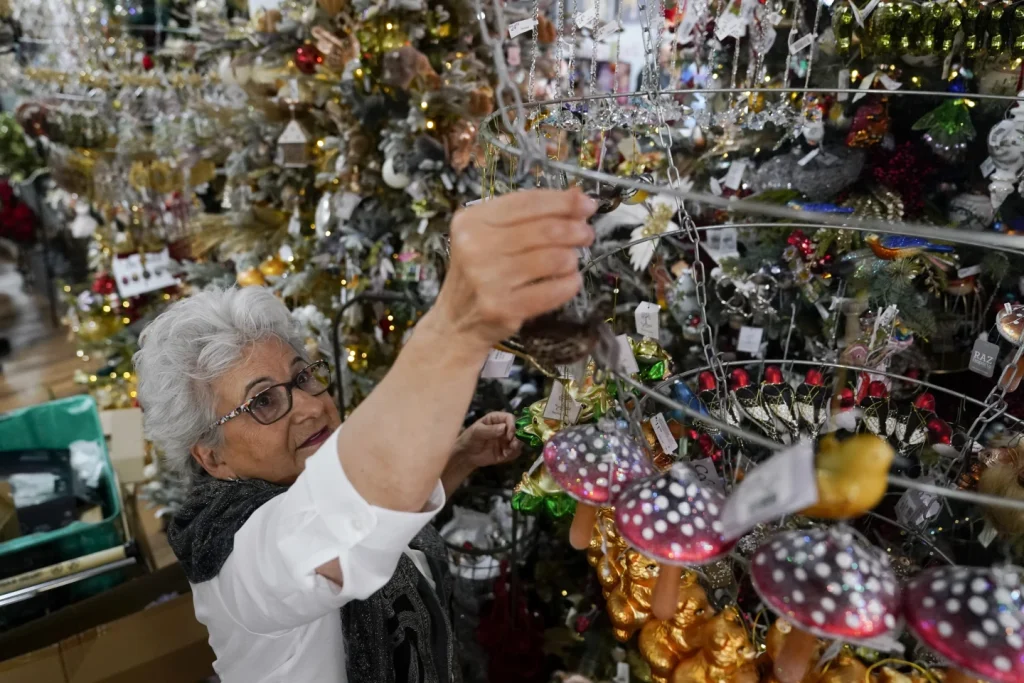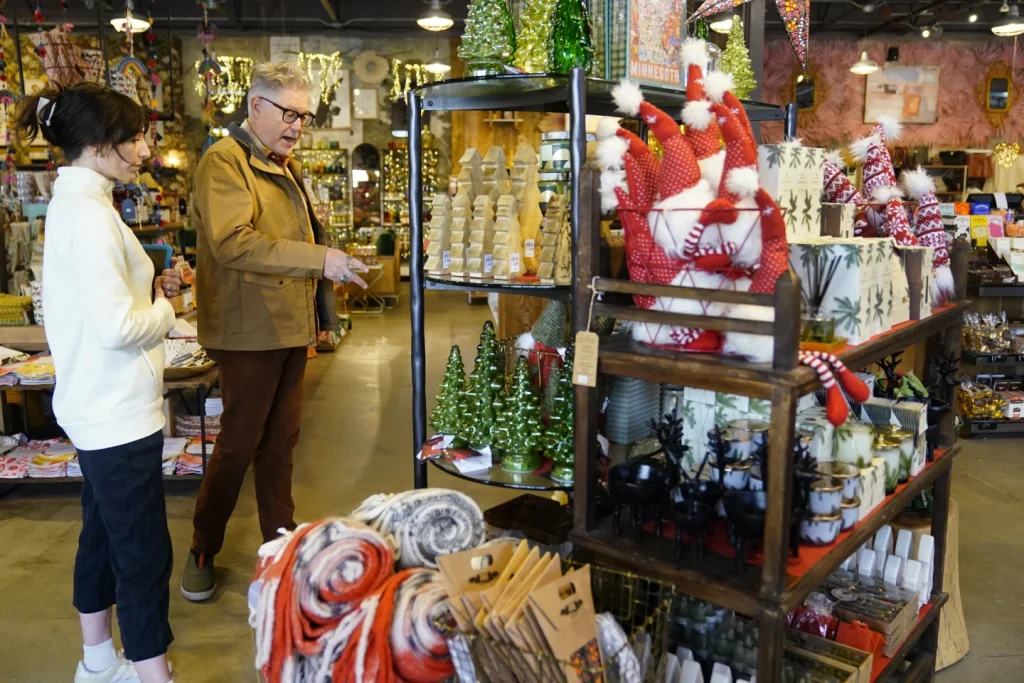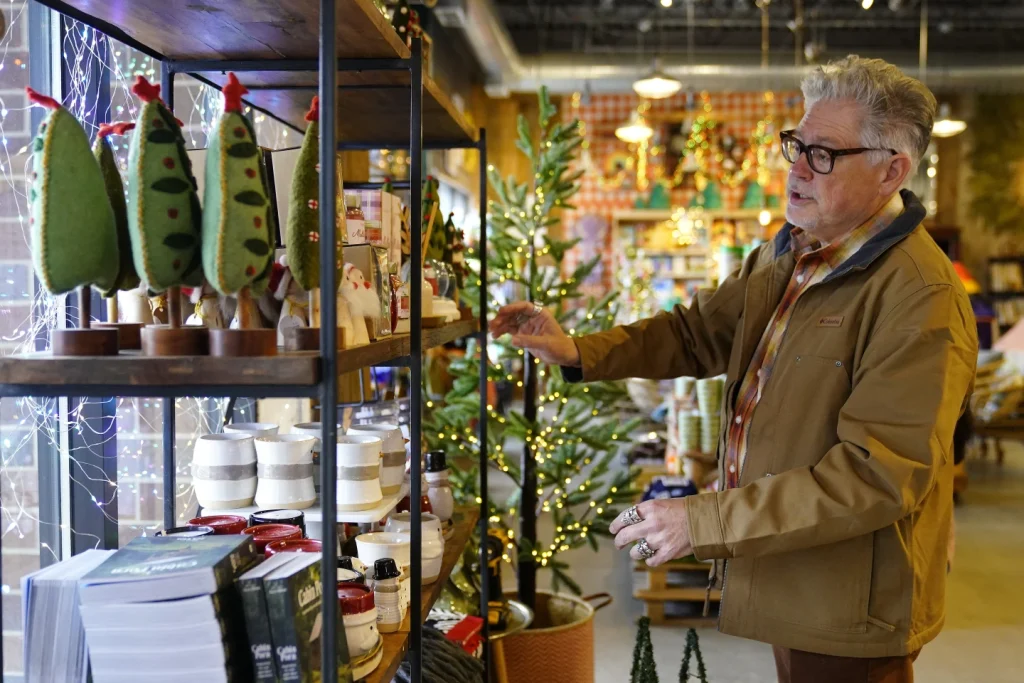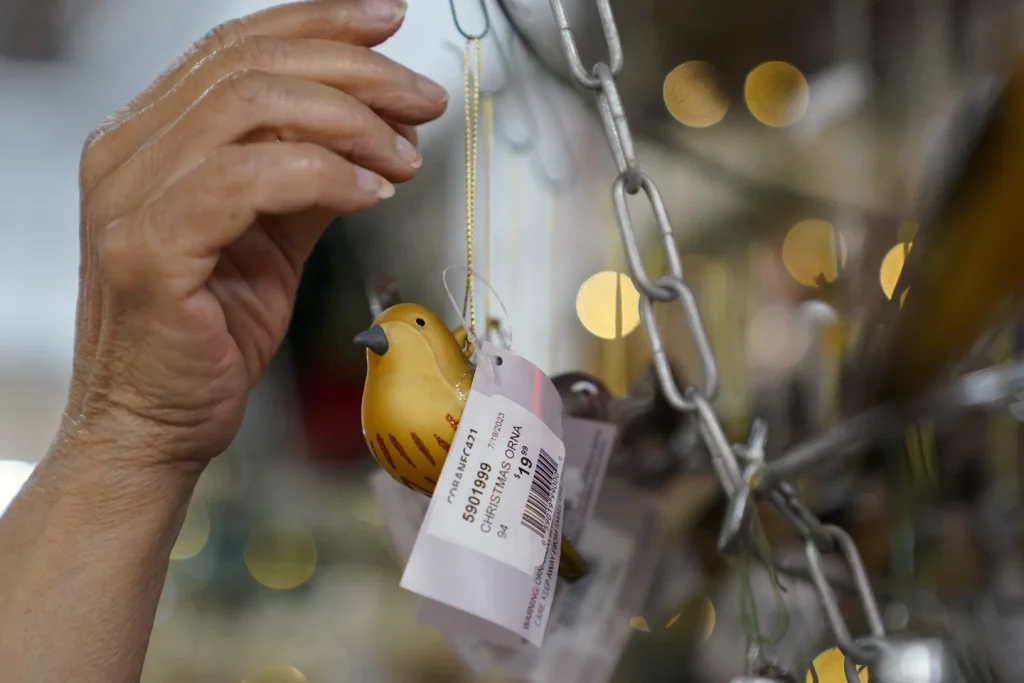According to recent reports, it seems that America’s small businesses can anticipate a promising holiday season. Despite this positive outlook, there appears to be a prevailing sense of apprehension among business owners regarding the upcoming months.
Interestingly, these concerns can be attributed to the very customers who have contributed to the thriving economy.
The American populace has continued to display robust spending habits throughout the summer, as evident from the government’s estimation of a 4.9% growth in the economy during the third quarter.
However, despite their willingness to open their wallets, consumers seem to harbor a sense of pessimism when it comes to their own financial situations.
A recent poll conducted by AP-NORC revealed that a significant number of Americans are genuinely worried about their future financial prospects.
Following a two-year period marked by a surge in sales driven by the COVID-19 pandemic, business owners find themselves apprehensive about the upcoming holiday season.
The fear stems from the possibility that consumers may have exhausted their pandemic savings and could potentially reduce their spending or revert to online shopping, despite their initial efforts to physically visit and support local businesses.
Moreover, the persistent concern surrounding inflation coupled with higher interest rates further adds to the uncertainty surrounding this year’s holiday season.
Additionally, the unpredictable nature of weather conditions further compounds the challenges faced by businesses in planning and strategizing for the upcoming period.
As a result, business owners are left grappling with a myriad of factors that could potentially impact their sales and overall success during this critical time.
The current state of the economy has left many retailers feeling uncertain, as expressed by Max Rhodes, the CEO of Faire, an online wholesale marketplace widely utilized by small retailers for inventory purchases.
The combination of higher inflation and rising interest rates has instilled a sense of unease among consumers, which in turn affects retailers’ confidence.
The overall economic situation can be described as peculiar, with the data appearing positive while the general sentiment remains negative.
Rhodes has observed a shift in consumer behavior, with his customers initiating searches for “Christmas” items as early as mid-August, compared to the previous year when such searches began in mid-September.
This early purchasing trend serves to alleviate the stress caused by supply-chain bottlenecks and allows retailers the opportunity to replenish their stock in case of early sellouts.
For many retailers, the holiday season plays a pivotal role, accounting for a significant portion of their annual sales.

The National Retail Federation, a trade group, predicts a 3% to 4% increase in holiday retail sales for 2023. However, due to the moderating effects of inflation, the total value of these sales is projected to grow at a slower pace.
In 2022, sales experienced a notable surge of 5.3%, according to the NRF.
Initial indications suggest that sales during the holiday season have remained on par with previous years, with consumers making purchases that provide them temporary respite from their financial concerns.
Despite the prevailing uncertainties in the economy, consumers are still willing to engage in discretionary spending, albeit with a degree of caution.
In conclusion, the current economic climate has left retailers in a state of uncertainty. The combination of inflation and rising interest rates has created a sense of nervousness among consumers, which has a direct impact on retailers’ confidence levels.
The holiday season, which traditionally accounts for a significant portion of annual sales, is expected to see a moderate increase in sales.
However, due to inflationary pressures, the growth in the total value of these sales is anticipated to be slower.
Nonetheless, early indications suggest that consumers are still making purchases, albeit with some apprehension, as they seek temporary relief from financial concerns.
The current market trend of “comfort” items gaining popularity among shop owners is an interesting phenomenon that reflects the prevailing consumer sentiment.
According to various shop owners, products such as high-end candles, plush stuffed animals for adults (particularly the brand Jellycat), sparkly items like disco balls, and merchandise related to Barbie and Taylor Swift are experiencing strong sales.
Rick Haase, the owner of eight Patina gift shops in St. Paul and Minneapolis, Minnesota, describes this trend as a “bright future” in the retail industry.
He attributes the demand for these products to the desire for happiness and escapism in a world burdened with heaviness. In essence, customers are gravitating towards items that bring joy and positively impact their lives.
Similarly, Kimberley Yurkiewicz, the owner of Measure Twice, a card and gift store in Brooklyn, New York, highlights the increasing demand for higher-priced candles.
She notes that customers are willing to pay between $45 and $65 for candles, a significant increase from the price range of $25 to $45 observed in the previous year.
This shift in consumer behavior indicates a willingness to invest in products that enhance their well-being and create a comforting atmosphere.
However, Yurkiewicz acknowledges the challenges in accurately analyzing sales figures amidst the constant disruptions caused by factors like COVID-19, fluctuating tourism, and recession fears.
The ever-changing landscape makes it difficult to establish a baseline for “true” or “normal” sales numbers.
Consequently, obtaining accurate data for sales reporting becomes a daunting task, as the prevailing circumstances can often cloud the accurate assessment of market performance.
In conclusion, the surge in demand for comfort items reflects a broader trend of seeking solace and happiness in the face of global challenges.
Shop owners are witnessing a shift towards products that promote positivity and provide an escape from the heaviness of everyday life.
However, the unpredictable nature of the current environment poses challenges in accurately assessing and reporting sales figures.
As we navigate through these uncertain times, it is important for businesses to adapt and find innovative ways to meet the evolving needs and desires of consumers.
The shifting consumer behavior during the holiday season has been a topic of great interest and analysis in recent years.
The impact of the COVID-19 pandemic on shopping habits has been particularly noteworthy, with many individuals opting for outdoor holiday decorations instead of hosting guests.
However, as we enter a new year, there seems to be a resurgence in the desire to entertain, leading to a shift in consumer preferences towards indoor decorations, place settings, and ornaments.
One such business that has experienced this shift is Blackhawk Hardware, located in Charlotte, North Carolina.
Andy Wilkerson, the co-owner of the store, has observed a sales boost in 2021 and 2022 as customers focused on outdoor holiday decorations.
However, he is now witnessing an influx of shoppers purchasing indoor decorations, resulting in sales figures that are on par with the previous year.
Wilkerson finds this stability in sales quite remarkable, considering the abnormality of the past couple of years due to people staying home or altering their holiday traditions.
This steady performance is seen as a positive sign for the business.
Despite the positive outlook, some business owners still bear the scars of supply-chain driven shortages during the pandemic.

Heather Haynie, the co-owner of Rock Paper Scissors stationary store in Charlottesville, Virginia, took proactive measures to mitigate potential inventory issues.
She had her holiday items shipped in earlier this year, in October instead of the usual mid-month timeframe.
Haynie has noticed a change in consumer behavior, with customers now adopting a “buy something when they see it” mentality. This shift in mindset is likely a result of the uncertainties brought about by the pandemic.
However, Haynie also expresses concerns about the potential allure of online shopping giants like Amazon. After experiencing her best two holiday seasons in 2021 and 2022, she fears that customers may be swayed by the convenience and competitive deals offered by these larger online players.
The National Retail Federation (NRF) supports her concerns by predicting a 7% to 9% increase in online and non-store sales this year, following a 9.5% rise during the holiday period in 2022.
The fear of losing customers to online shopping platforms is not unfounded. The convenience of browsing and purchasing products from the comfort of one’s own home, coupled with the vast selection and competitive pricing offered by online retailers, can be tempting for time-strapped consumers.
Additionally, the lingering effects of the pandemic may have diminished the sense of urgency to support local businesses, as people’s lives become busier once again.
As we navigate the ever-changing landscape of retail, it is crucial for local businesses to adapt and find ways to differentiate themselves from their online competitors.
Emphasizing the unique and personalized experience that brick-and-mortar stores can provide may help attract and retain customers.
Building strong relationships with the local community and offering exceptional customer service are also essential in fostering customer loyalty.
In conclusion, the holiday shopping landscape has experienced significant shifts in recent years, primarily driven by the COVID-19 pandemic.
While some businesses have seen a boost in sales due to changing consumer preferences, others remain concerned about the potential impact of online giants like Amazon.
As we move forward, it is imperative for businesses to adapt to these changing dynamics and find ways to stand out in the competitive retail market.

By focusing on personalized experiences, community engagement, and exceptional customer service, local businesses can continue to thrive and maintain their relevance in the face of online competition.
Sierra Wallis, the owner of Sq/Ft gift shop in Decatur, Georgia, has had a successful run in the past two years, with her sales reaching new heights.
However, despite the continued growth in sales this year, Wallis has noticed a decline in the average spending per customer. Instead of one customer spending $200, she now has 10 customers spending $20 each.
This trend has left her feeling like she is “chasing her own tail,” as the increase in business is being offset by the need to work harder to maintain the same level of revenue.
As the holidays approach, Wallis is acutely aware of the importance of this season to her business, as it accounts for two-thirds of her annual sales.
However, she is also aware of the unpredictability of holiday sales and has decided to limit her reordering during this time.
Wallis has already ordered all of her holiday inventory and is hoping to sell through it by mid-December. After that, she plans to restock with gift items that can sell not only during the holidays but also in January and beyond.
Despite the challenges that come with running a business during the holiday season, Wallis remains optimistic about the future.
She is confident that her strategy of stocking up on versatile gift items will pay off in the long run.
However, she acknowledges that the numbers can be daunting, and it can feel impossible to achieve the sales goals set for the next two months.
Nevertheless, she remains determined and believes that with hard work and a bit of luck, she can make it happen.

In conclusion, Sierra Wallis’ experience as a business owner highlights the challenges and opportunities that come with running a retail store during the holiday season.
Her strategy of stocking up on versatile gift items is a smart one, and her optimism is a testament to the resilience and determination required to succeed in the retail industry.
As customers, we can support small businesses like Sq/Ft by shopping local and spreading the word about the unique and wonderful products they offer.
